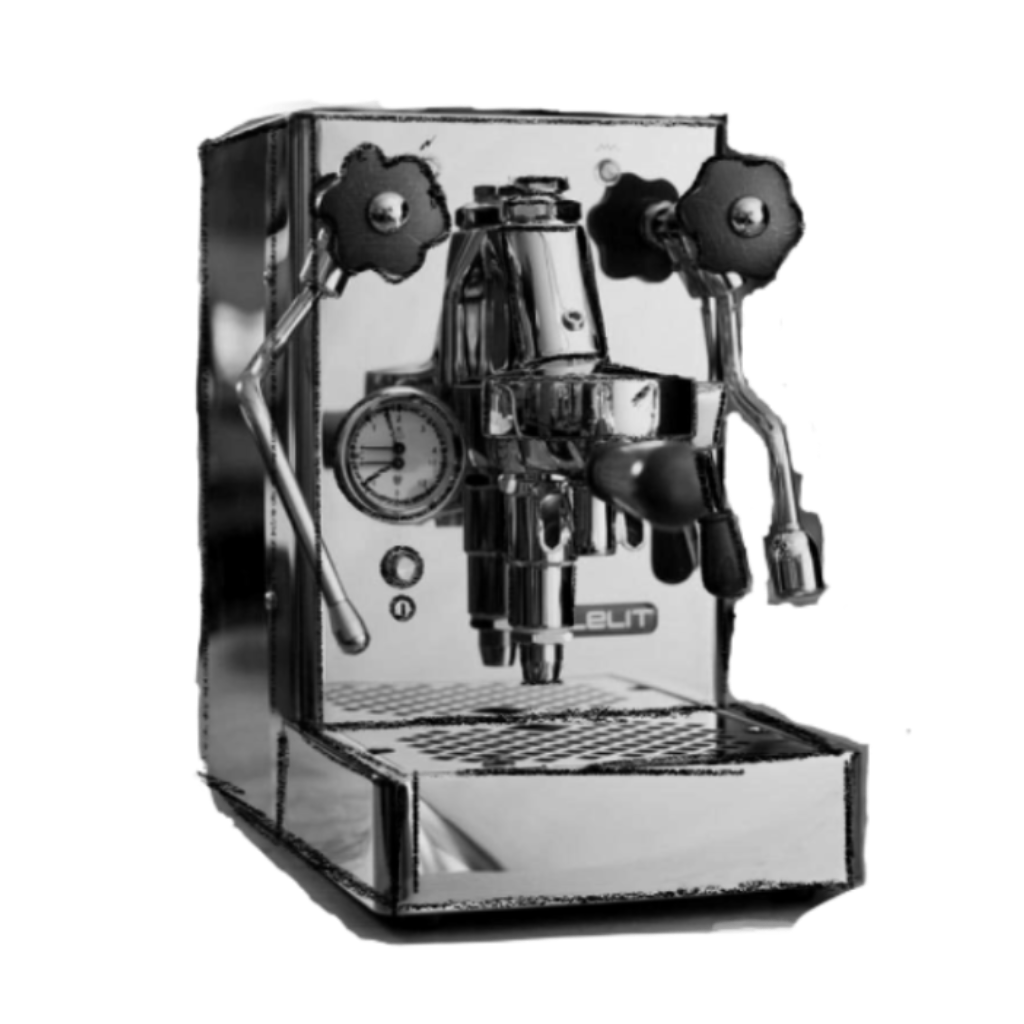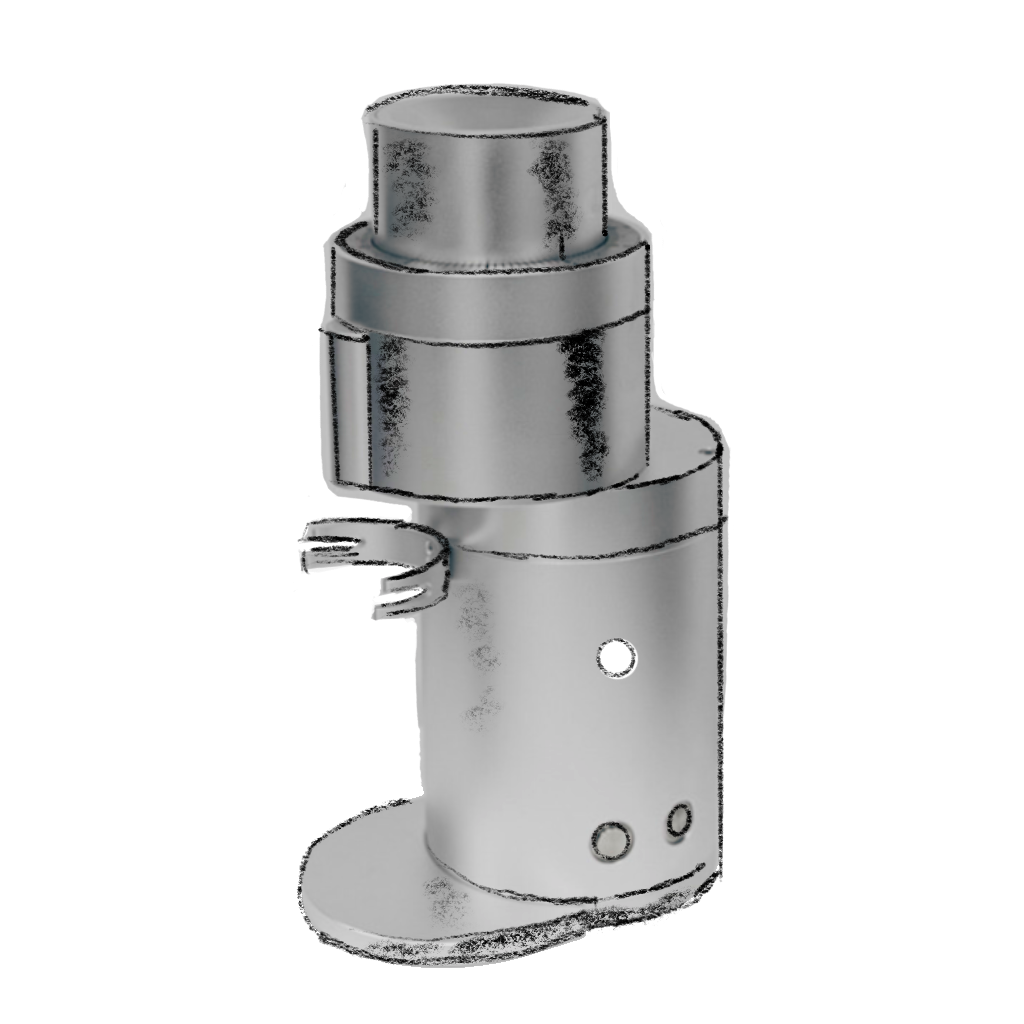Fellow Opus vs DF54 Grinder (Updated: 2025)

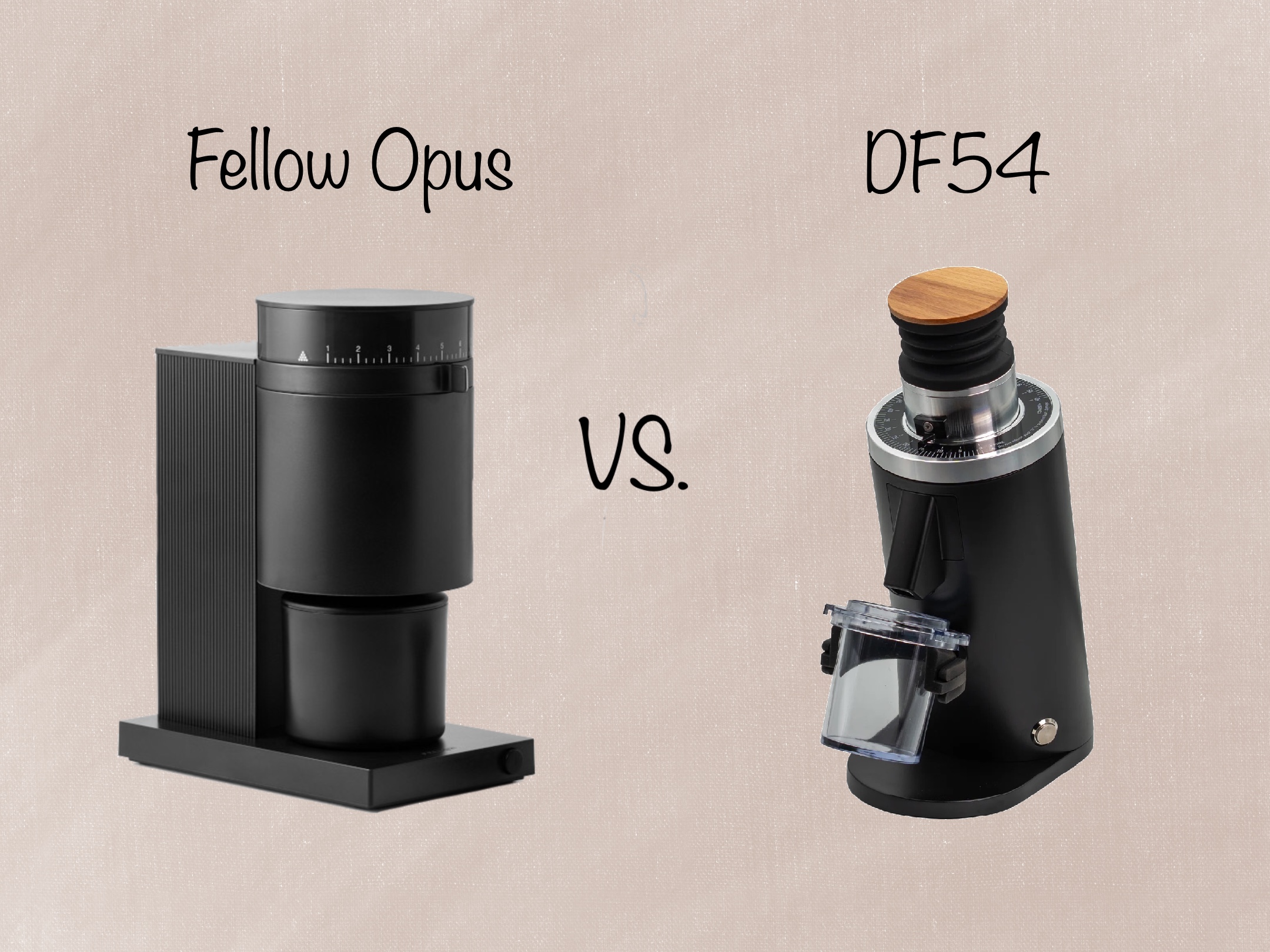
Introduction
The Fellow Opus is one of the go-to entry-level espresso grinders on the market. With a compact footprint, elegant design, and affordable price tag, the Fellow Opus has earned its popularity. However, the just-released DF54 grinder looks to overtake the Opus and become the new king of entry-level espresso grinders.
In this grinder comparison, we'll examine how the Fellow Opus and DF54 compare and contrast across six categories, and we'll share our top recommendation in 2024. Let's get brewing!
Table of Contents
Build and Design
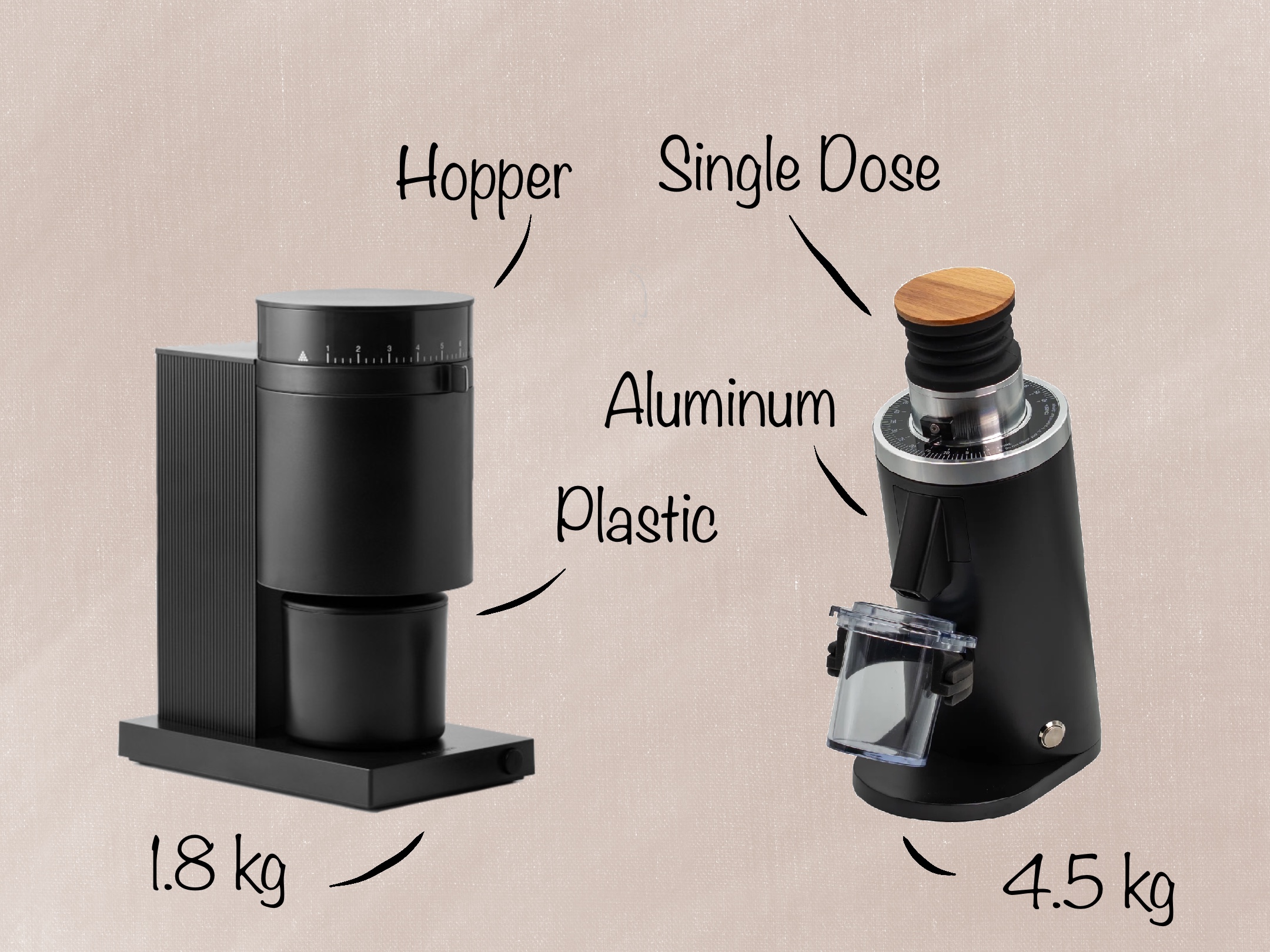
Design
These grinders are clearly identifiable at first glance. The Follow Opus sports a modern, elegant, and clean design, one of the reasons it has become so popular in the first place. With a simple flat base and modern rectangle and conical structure, the Opus looks good on almost every countertop and in every brew bar.
The DF54 has a simpler, plainer design. Mirroring its' bigger cousin, the DF64, the DF54 uses a simple angled conical design that houses the motor, burrset, and grind chamber. Atop the grind chamber is a simple yet effective bellows with a wood lid.
Dosing Style
These two grinders continue to diverge when examining the workflow and dosing style. The Fellow Opus uses a small hopper built into the grinder. Capable of fitting up to 110 grams of whole-bean coffee, the Fellow Opus is best for those looking to grind a bag of coffee at a time and dose based on time.
The DF54 is designed with a single-dose hopper, in line with the latest home espresso trends. With a capacity of only 20 grams of coffee at a time, the DF54 is meant to accept a single dose and must be refilled for each shot. Although single dosing requires a little more effort up front, it adds the valuable ability to swap beans for baristas looking for flavor flexibility day to day.
Material and Color
The Fellow Opus is made of a simple plastic body. Constructed from ABS and polycarbonate plastics, the Fellow Opus has a clean design that is available in matte black or matte black.
On the other hand, the DF54 uses a powder-coated aluminum body, a steel adjustment collar, and a wood bellows topper. This difference is noticeable immediately in overall feel and weight.
Weight
Speaking of - the more compact DF comes in at a heavier 4.5kg (10 lbs) compared to the 1.8g (4 lbs) of the Fellow Opus. Neither grinder is too heavy to lift and adjust, but the weight of the DF54 will be a welcome indicator of quality.
Burrset and Grind
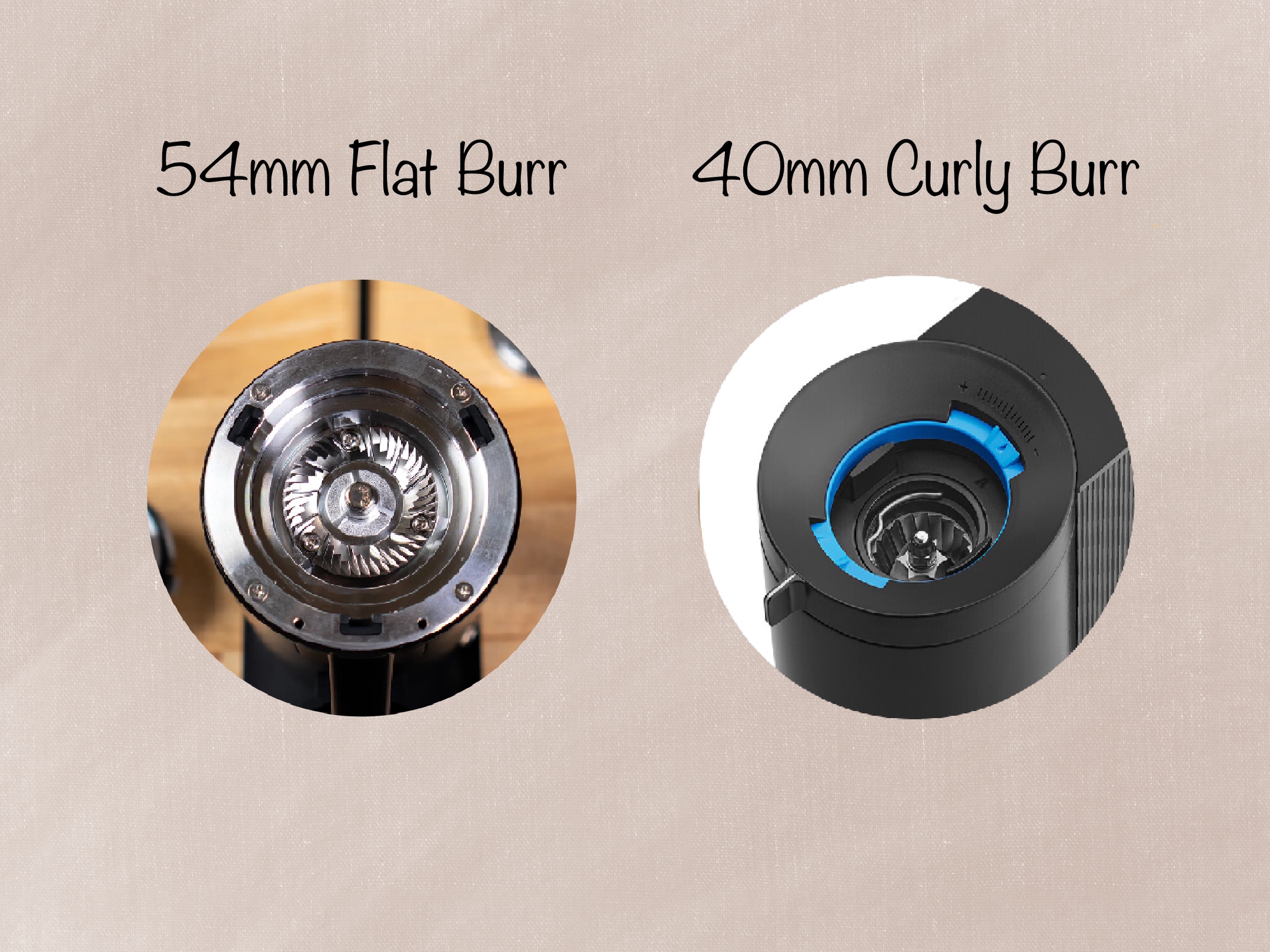
Burr Type
While both grinders have a variety of differences in terms of overall design, material, and feel, the biggest separator comes when looking inside the grinders.
The Fellow Opus uses compact conical burrs that are often found on entry-level grinders, such as the Bartazta Encore ESP and Breville Smart Ginder Pro. The DF54, on the other hand, comes with innovative flat burrs that are seldom found on entry-tier grinders.
Burr Size
On top of the general difference in burr type, these two grinders also differ in burr diameter. The Fellow Opus is designed with 40 mm conical burrs, compared to the larger 54mm flat burrs on the DF54.
Until the release of the DF54, the closest home-use grinder that used such large flat burrs was the Eureka Mignon Specialita, which comes in at nearly triple the price!
Burr Material
Both grinders use stainless steel as their primary burr material. The Fellow Opus uses the custom-made C6-40 Burly Burrs™ with a 6-core design designed for 6 Nm of torque. The DF54 uses similarly custom-made 54mm flat burrs, which help increase grind productivity speed while limiting overall grind size distribution.
Retention
As the coffee is ground, some fine particles and pieces are likely to become stuck inside the grind chamber and output shoot, a symptom known as retention.
The DF54 is advertised to have functionally zero retention, with less than 0.1 gram for each dose. The DF54 also has an anti-popcorn device and plasma generator (ionizer) to limit beans getting stuck in the hopper and from static electricity, respectively. The DF54 is topped by the integrated bellows that help reduce this even further by forcing air through the grinding chamber and out the shoot.
The Fellow Opus, designed with a hopper and no bellows, is known to have higher retention than a purpose-built single-dose grinder. That being said, with retention between 0.2 grams and 0.5 grams, the Opus still retains less than many other hopper-style grinders on the market.
Adjustment and Grind Range
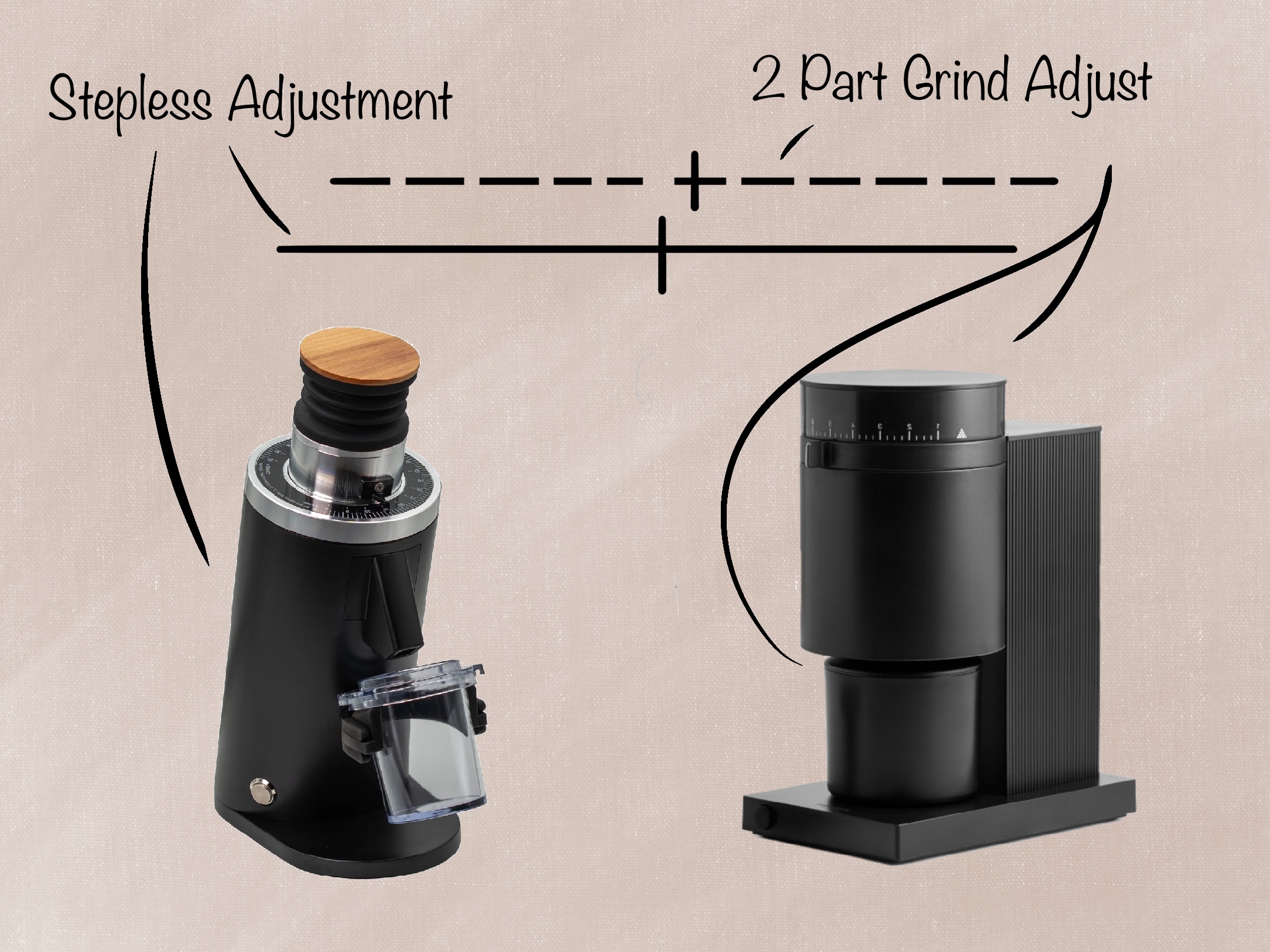
Adjustment Mechanism
Perhaps the biggest value difference between the Fellow Opus and the DF54 is in the grind adjustment mechanism. Almost all entry-level espresso grinders use a stepped adjustment mechanism; that is, the grind has pre-determined grind size steps that are discrete and unchangeable.
The Fellow Opus uses a somewhat convoluted two-part adjustment mechanism for macro and micro-adjustments. Atop the Opus is the macro adjustment ring to make large size adjustments to the overall grind size. Then, underneath the grinds shoot sits a second, smaller micro-adjustment mechanism used to fine-tune espresso. Although the Opus is capable of dialing in for espresso, the multi-part process is a less-than-ideal workflow, and among the chief complaints with the Opus' design.
One of the biggest innovations of the DF54 is the introduction of true step-less adjustment, something rarely found in entry-level espresso. Stepless adjustment allows the burrs to be moved closer together or further apart on a stepless continuum, meaning there are infinite grind options with no pre-determined steps. Stepless adjustment is the gold standard for espresso grinders and is found on the vast majority of premium espresso grinders.
Grind Range
Both the DF54 and the Fellow Opus are designed to grind across a full range of brew methods. While both grinders are designed with espresso in mind, they are each capable of grinding from pour-over all the way down to espresso.
Power and Accessories
Wattage & Motor
The Fellow Opus and DF54 are rated for a similar power draw. The Opus pulls 140W to spin the C6-40 Burly Burrs at a rated 350 RPM. The DF54 is rated slightly higher at 150W to spin the 54mm flat burrs. As of early 2024, RPM information has yet to be released. If the DF54 is anything like its larger DF64 sibling, the RPM will be pushing 1000 or more.
Dosing Cup
In line with the overall beauty of the Fellow design, the Opus comes with a magnetic metal catch cup that sits elegantly underneath the vertical grind chamber.
The DF54 is optimized for a more commercial-style workflow, with a food-safe transparent plastic 58mm dosing cup.
Pricing and Availability
Price
The Fellow Opus has long been priced at $195, just a hair less than the Baratza Encore ESP or Breville Smart Grinder Pro. Regularly on sale, the Opus can be found as low as $150 during the holiday season.
The DF54 is set to MSRP at $229, only $35 more than the Fellow Opus. And for those 30 extra dollars, the DF54 is equipped with much more robust 54mm flat burrs and true stepless adjustment.
Availability
As of February 2024, the DF54 grinder is available for pre-order. The two primary vendors of the DF54 in the United States - Turin and MiiCoffee - have announced the grinder with late March or early April shipment dates.
The Opus continues to remain highly available, including through Amazon, Clive Coffee, or Seattle Coffee Gear.
Which Should You Buy?
The Fellow Opus is known for its beautiful design and for looking good in almost every espresso setup. It is also known for its less-than-perfect workflow and adjustment mechanism. If you are looking for a highly available grinder that indexes on form over pure function, the Opus is a strong choice.
But, the time of the Opus and similar grinders may be drawing to a close. The DF54, priced remarkably similarly, offers features and functionality not found on any other grinders in the price bracket. If you are able to wait even just 60 days to get your first espresso grinder, the DF54 is a much better offering. With a better burrset, true stepless adjustment, and higher output, all in a smaller package, the DF54 is set to become the new kind of entry-level grinder in 2024.
